A letter from Lord Coaker to Lord West of Spithead has shed light on ongoing plans for a second vessel to support RFA Proteus in safeguarding the UK’s undersea telecommunications network, according to official correspondence.
Dated 28 January 2025, the letter reaffirms “the RFA Proteus is the first of two multi-role ocean surveillance ships,” with a second ship “currently in its concept phase.”
Although the original intention was to deploy two vessels, Lord Coaker indicates that the Strategic Defence Review “will consider how best to deliver defence capabilities and augment RFA Proteus,” suggesting that details such as the second vessel’s role or final specifications may depend on the review’s outcomes.
Lord Coaker underscores the government’s “commitment to ensuring the security and resilience of the UK’s telecommunications infrastructure,” noting established processes for “effective coordination across Government departments and agencies and with the subsea cable and telecoms industries.”
In addition, the letter references the Telecommunications (Security) Act 2021, which requires providers to “identify, reduce, prepare for and respond to security and resilience risks.”
The future of British seapower lies in ships like RFA Proteus
Addressing the RFA Proteus’s operations, Lord Coaker states it “undertakes survey work and protects the UK’s maritime zone and undersea critical national infrastructure,” using remotely piloted technologies and coordinating with cross-governmental resources.
The letter also highlights that “we constantly monitor UK territorial waters and our areas of interest to protect the nation and safeguard critical infrastructure,” reflecting an ongoing, multifaceted approach to undersea security.
While plans for an additional multi-role ocean surveillance ship remain part of a “larger programme to update the Royal Navy’s military data gathering capability,” the final shape and timing of this second vessel are expected to emerge from the forthcoming Strategic Defence Review.


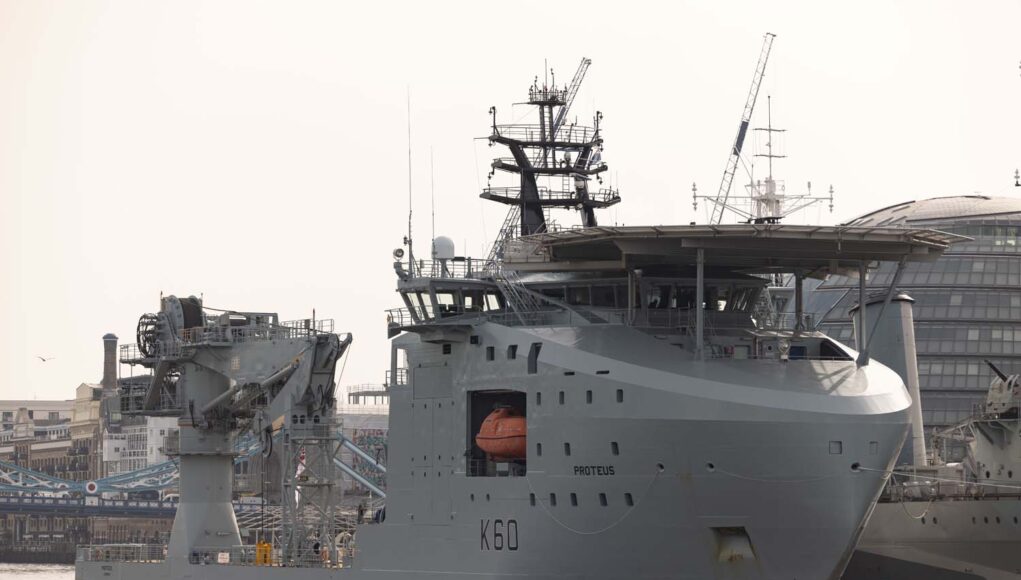

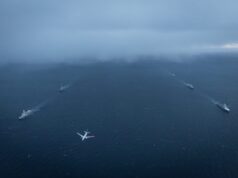
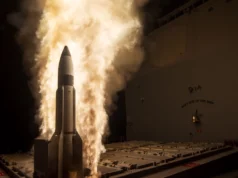
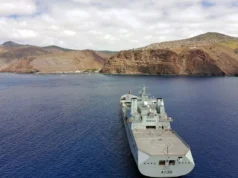
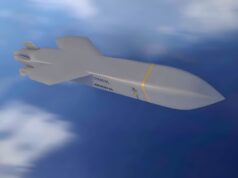
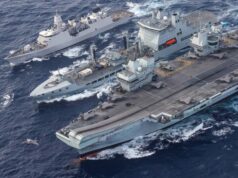
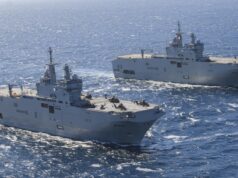

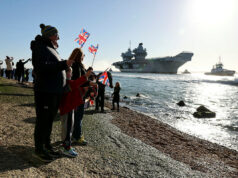


Good news; Proteus is a success! How about Sterling Castle?
How about RN MCM as a whole. It’s arguably the biggest loss in terms of capability and capacity over the last 10 years that very few people have bat an eye at.
Spot on and we had the best , days gone like must things I guess 🙄
I confess I don’t understand what Sterling Castle doing. The Belgians, Dutch and French are buying the City class MCMV mothership….sort of a Kongsberg thing. As a commercial buy Sterling Castle is cheaper. Are the trials just to demonstrate that a commercial vessel can do the job? I saw Babcock produced a T32 design for lengthened T31 with a full width MCMV mission bay. What’s that all about? Hope the SDR provides some direction.
The MoD recently commissioned Kongsberg to do a study on the feasibility of their Vanguard design to fulfil the MCM mothership role. I think the experience with Sterling Castle to date has swung the preference back from off the shelf commercial vessels to a more military grade, purpose built solution.
It’s not StErling Castle, it’s StIrling Castle. Big castle in Stirling, midway between Glasgow and Edinburgh, RHQ of the Argyll & Sutherlands, now reduced to company size.
[ 𝐎𝐧𝐥𝐢𝐧𝐞 𝐁𝐫𝐚𝐧𝐝𝐞𝐝 𝐏𝐫𝐨𝐝𝐮𝐜𝐭𝐬 𝐖𝐢𝐭𝐡 𝐂𝐡𝐞𝐞𝐩𝐞𝐫 𝐏𝐫𝐢𝐜𝐞𝐬]
Every type of Men Fashion, Women Fashion and Kid Fashion are available here. Iphone mobile covers, hoodies, trousers with all size and colors are available here with much better and in cheaper prices.
So visit my store and get best
collection here…. Check MY Name
success? based on what? have we actually found somebody or something messing about with the cables? what did we do about it?
agreed along with it’s status of power. a navy the size of a coastguard
what can proteus do that a dedicated patrol drone can’t? a pack of armed Cetus types could do it cheaper, faster to build a fleet of the no wages to pay for a cre,no stores, no actual operating cost program a route and presss the enter button on a keyboard and off it would go.. transportable by air deployable from anywhere on the plane. armed we’d hope with equipment for the .non passive warfare it may be needed to do. the royal navy could be at the front of development in this area getting more bang for the buck faster. instead of cuts, we could commit and do it through the right investment in the science and production capability. the RN used to be innovative and known for its ability to g do something that other nations couldn’t. we still can be.
Silly question, but will two actually be enough? Having three or more would give more comprehensive and sustainable coverage and with a bit of multi-purpose added in would give a boost coastal, regional and North Sea security.
the better investment would be a flotilla of Cetus type drones on permanent patrol along the cables with the ability to force would be sabateurs away from them.
Silly question, but will two actually be enough? Having three or more would give more comprehensive and sustainable coverage and with a bit of multi-purpose added in would give a boost coastal, regional and North Sea security.
Sorry for the double entry..
it’s clear that starmers government is out of its depth on defense and listens to the utterly guff that speed out of the MOD
This is getting silly.
So shift the onus for Defence of underseas networks to the providers of said multi-faceted infrastructure and save the Govt a few Bob.
And continue slashing Defence platforms and aspirations; great management technique.
Actually the network cables aren’t the issue. It’s the sprawling offshore energy infrastructure that’s going to consume far more of the surface fleets time. For 250 GW of offshore wind we need around 40,000 sq km. So that’s equivalent of defending Denmark !!!
If only there was an alternative that could be kept onshore, in a relatively small footprint easily guarded by a dozen or so extremely violent men.
(Hint: it rhymes with “Shmuclear”)
I see the ghost of HMS Challenger.
No ghost, she still exists as the Ya Toivo, a diamond mining ship operated by Trans Hex Marine. Ironically, as a “failure” with the RN at over 40 years old she has outlasted most RN ships of her era. That said, you would be hard pushed to recognise her now….
The problem is critical mass to be cost effective.
Most UK military programs are already too small to get full economies of scale.
Right! So what we need are more multinational projects…..like Boxer 🙂
Or F35
No, what we need are larger buys of less exquisite systems.
You are right. I was being facetious. Perhaps the talk of Patria 6×6 means the penny has dropped.
Been asking this for years.
A better balance between quality and quantity.
Good enough rather than gold plated and bespoke.
I see no other way to increase mass.
I agree with you Daniele, but sometimes you just need more of what you already have in limited numbers. We have world class ASW assets being produced, we just need more of them. We don’t need a modified T-31 frigate that’s ok at sub detection for most of the money of a T-26. Same with fitting Wildcat with a dipping sonar, if we want a helo doing ASW, buy more Merlins.
What price the security of our undersea assets when we are are an island nation? Just asking that question should concentrate minds.
You take a good selfie George!
I really don’t understand why they simply don’t develop a proper patrol, surveillance and mine warfare platform.. in the end all of these capabilities are now modular based on autonomous vessels.
So what they need a program of 2000-3000 ton vessels, that have, a work deck, small well deck, flight deck, crane. Give it a basics self protection kit including a 57mm medium gun essentially a rivers batch 3.. build 10 then another 5 as the rivers 2 go out.
Too small to do the kind of work required.
These drones are going to get rather large and rather heavy so a v. big ship with chunky crane….
That’s is where the MRSS come come in…you’re not going to want 6 of them doing amphibious vessel work all the time..so essentially they become your very large littoral patrol ships…when you want a lot of UAV,AUVs in one area.
Your 3000 tones patrol ship if designed well is plenty big enough for a couple of 11meter SEA class boats for mine warfare duties, or act as mother to a couple of 12 meter Herne XLAUVs.
Essentially you have a mixed force of 21 low manpower patrol ships 15 3000 tons and 6 15,000 tons..that all then have a proper hot war role as well.
Good point. If we go for a fleet of dedicated MCM ships we could up boxing ourselves in wrt drone development. Buying another one or two Sterling Castles might be the smart move in the medium term. The new frigates have mission bays and the crane on a batch 2 River is rated for 25 tons.
Or just buy the Dutch-Belgian-French CIty class MCM ships.
A 2nd MRSS needs to replace HMS Scott needs to have the endurance and seakeeping for long stints in deep ocean, so personally i think it’d need to be a larger bespoke design like RRS David Attenborough.
However i absolutely agree that with a modicum of foresight and coherent ambition we’d be looking to replace the Hunt’s, Sandown’s, Echo’s and eventually the River’s with a large OPV style design that can swap out modular kit for all of those support roles.
As it is we have go for the Kongsberg Vanguard design which fits the bill…….but sadly only 3 of them to carry MCM drones.
Or just buy the Dutch-Belgian-French CIty class MCM ships.
Too small
Normally I get told they are too big. If you double the number of drones you would be up to a vessel displacing over 5000 tonnes with all the associate costs and problems.
I was thinking similarly as to why the UK didn’t cooperate with the design of this and buy some. There’s also the BMT Venari 85 design proposal that never got up. Maybe that’s too small too.
we had our own and as usual, when there’s cuts to be done at least one sweeper cops for it. it shows that the fact is that strategically the navy doesn’t know what it’s main direction is. first it’s strike capability using carriers without aircraft, then it amphibious capabilit and we’ve recently seen the result of that’s various aspects of warfare in the gulf. with warships and the limited MCM now it will be needed in the black sea when the Ukraine will be beset with Russians mines. the other thing is the dismal size of the escort fleet. the Proteus and Stirling castle ideas shows that noone has the basket to put our eggs into
Aren’t these MCM drones going to be deployable on the T26s – isn’t that part of what their operations bays are for? Allows for one each for the T26s and 3 others, for isn’t it 11 sets on order?
There won’t be enough T26 for them to play at drone mothership. Do you know anything MCM or drone technology? Are you one of those who think a torpedo shaped thing will be dropped off over the side and then go on to clears acres of sea all on its own?
The operations bays are nothing more than spare volume in the hul that have been sold as a feature of the design. These are 7000 tonne ships. There is only so much ship you need to carry a sonar, a helicopter and some radar. Even with modern accommodation standards it leaves lots of spare volume. Remember weapons and sensors need to be on the exterior of the vessel. Prime movers, especially diesels, need to be at the bottom of the hull for stability reasons. This leaves oodles of spare volume.
I don’t really appreciate your attitude in your replies Stephanie. I’ve been on this site for several years and I know what ships are. Keep it civil will you. Thank you.
I hope we are better at the use of mine warfare from a warship than the Americans were with the plans to do it from their LCS fleet.
There’s the T31 type A140/MCM and the MRNP stretched variants that could be useful and to do multi tasks.
No T31 is an escort. To escort things moving from one place to another. It is not a depot or a mother ship.
https://www.arrowhead140.com/modular-system-specific-roles/
Have a look here under the MCM variant as to what the T31/A140 could do. Yes it might have to be tweaked and adapted more to be a more specific purposed mothership but it could be a start.
built to be warships and not taking 4 years banging them together
Odd how some decisions are left to the defence review whilst others are already made. But by the sounds of this the some of the surface fleet is going to be retasked to infrastructure protection. Which I’m not surprised at UKs offshore power infrastructure will grow to cover 10s of 1000s sq kms all of which needs protection.
The budget originally intended for a second MROSS is instead being used to keep HMS Scott in service for a decade longer than her originally planned 2022 decommissioning date. Probably a very sensible call, like Argus she is too useful to decommission and too expensive to replace.
Scott is currently undergoing a life extension refit to keep her going until the” early 2030’s”. Maybe SDR2025 will give some clarity as to whether a replacement will be ordered, but I’m not holding my breath – I expect just some some vague statements about the need to defend the UK’s critical underwater infrastructure, with no explanation as to how this will be done.
Still not clear what Proteus is meant to do. Yes, it has a moonpool, submersible and crane, so it can lower the submersible – which I assume is unmanned – to inspect.cables and pipes on the sea floor. OK, that will tell us where the Russkis have cut the cable. Does the submersible then do the repair job, or do we wait for a civil.repair ship to chug along and fix things?
What does Proteus do when it comes across a cable-cutting culprit? Being RFA rather than RN. Is it going to put a shot across her bows, board her and take her in tow? Or wait for an RN escort to chug along any day now to do the combative bit?
If it can only do the identification of severed cables and pipes, not their repair and not sorting out the cable-cutting ship, it looks kind of a token, political answer, rather than an effective addition to the fleet. If something more capable is envisaged, we will likely need 3 of them. The bulk of the telecoms cables are in the southern North Sea and the South-West approaches, but then we have other oil, gas, windpower and telecoms lines further north. I would think that one Proteus handling the East Coast and one the West Coast would be about right, with a third one alongside or in routine maintenance. All that assuming Proteus can do a useful job other than just identifying where accident/sabotage has occurred -.we could charter a specialist merchant ship to do that and carry out repairs.
It cannot legally do anything that is considered a belligerent action as it’s not a commissioned warship.
This is just blatantly not correct. In recent years counter narcotics operations amongst others have been carried out by RFA vessels. A team embark from the RN/US LEDET and the ship is then treated as a warship and can carry out boarding etc under their direction.
This “NoT a CoMissIoNed wArshIP” rubbish is a shit arguement to keep bleating on about. It’s not like the RN is in any better position to man their ships let alone any new ones, the RFA simple has allowed this capability to be generated in a non 5+ year time frame in a way the navy could never have achieved otherwise.
It’s actually international law and a very live debate, not a shite argument. I would read “WITH ONE HAND TIED: NAVAL AUXILIARIES AND THEIR ABILITY TO CONDUCT BELLIGERENT ACTS” by David T Lee.
Counter narcotics work not considered a belligerent action, the definition of belligerent action is around one state against another state, not counter terrorism or constabulary work against none state actors…historically there have been cases of captains of auxiliary vessels being shot for being illegal combatants after attack warships and then surrendering ( the German navy did this ).
“Yet despite being subject to hostile attacks, naval auxiliaries may only lawfully act in self-defense.”
“U.S. Navy auxiliaries have been intentionally designed and utilized to perform only supporting tasks which fall well within current legal norms. These include providing logistical support, or serving as air or seaborne launch pads to transport troops and ammunition. But there is an increasing desire to expand the functions which auxiliaries can execute, including electronic attack, intelligence collection, command and control, and mine countermeasures. To the extent these and other missions could be construed as belligerent acts, the current rule straitjackets auxiliaries in armed conflict. As the potential list of activities performed by auxiliaries expands, the legal restriction against belligerent acts by auxiliaries has imposed an unnecessary hurdle in operational planning and execution.”
Scary Selfie I have to say.
How does this one un armed ship protect any thing, if it finds any thing do crew stand deck and yell abuse? And every thing lately seems on hold or no commitment. Still no replacement for Warrior, AS90, etc just defection and hot air. Nothing ordered just rumours, gossip, no solid facts about much.
built to be warships and not taking 4 years banging them together more wasted budget we should be building sweepers.
Typical of any UK government… they send Trainee’s to the Arctic in ‘canoes’, to suffer in freezing conditions. They sell the ships that the Marines would use, to land on foreign shores, and potentially shelve a second Proteus type ship, to save a few quid.
bin the pair of them
it’s clear that starmers government is out of its depth on defense and listens to the utterly guff that speed out of the MOD
Good Day from hot and humid Durban. Are these ships capable of doing at least some of the work previously undertaken by Echo/Enterprise?
build minelayers and put mines along the cable rotes
echo and enterprise were platforms that could 4 bren fitted out to do almost anything. their ability to operate towed array systems is overlooked. and the pair of them should be in service
The MOD will need to purchase a military grade mothership solution- this could be a revised type 31 design equivalence to the Absalon class in Danish service which is a hybrid patrol frigate and general purpose utility vessel- large deck metreage and ability to deploy USV, USSV etc- I think the RN will need probably 6+ vessels to provide adequate coverage for the UK EEZ- cost around £200 million per hull so £1.2 billion to replace the MCM fleet- useful secondary ASW and patrol roles.
Doesnt remove the requirement for additional type 26 or type 31 frigates
Fantasy Fleet aspirations, from the comments section I see.
In years gone by it wouldn’t have been “fantasy fleets” to state the RN needs adequate numbers of ships to perform it’s tasking. Only since 1990s and repeated governments failing to invest in defence and downgrade the UKs core capabilities is it now seen as fantasy fleets. It isn’t fantasy fleets it’s realistically what is needed and we should be building.
https://www.janes.com/osint-insights/defence-news/sea/denmark-plans-acquisition-of-three-new-arctic-patrol-ships
Mr Bell, you might like this type ship to meet your requirements.